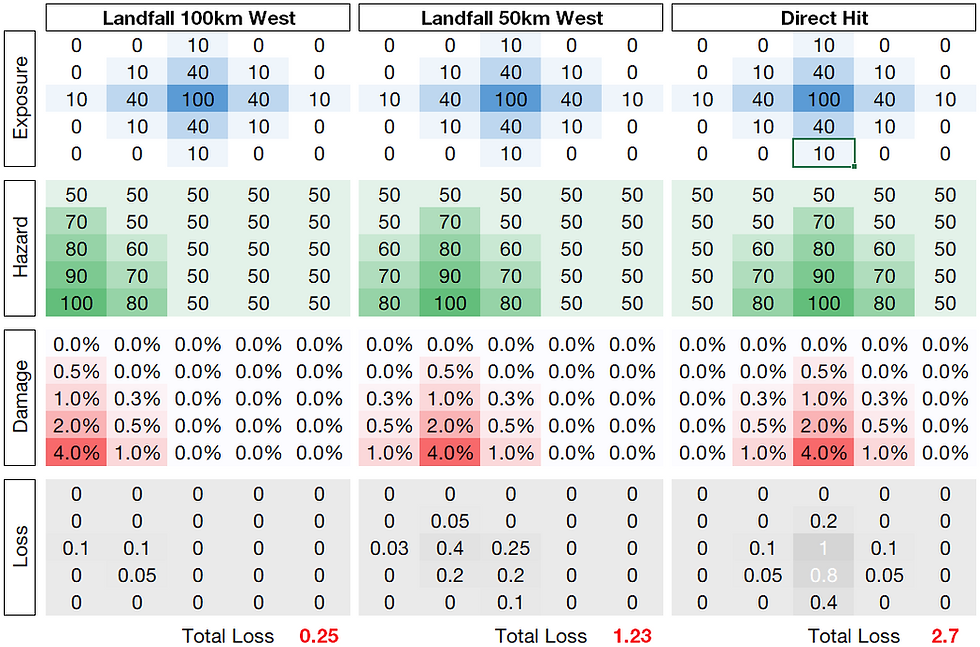Historical Data and Climate Trends
- Richard Dixon

- Nov 18, 2019
- 3 min read
I've spoken (probably way too much) about the work I've been doing looking into climate model simulations of our present-day climate through the lens of windstorm losses. One of the main things I've unexpectedly learnt from this is how perilous it might be to make inferences about climate trends from historical data alone.
The example below provides simply some thoughts on the topic: I'm not saying I'm right or wrong, I want to provide some food for thought. I certainly want to ensure you that I'm not in any particular camp in the climate debate with regards catastrophe events. As someone working with at least one foot in the insurance industry, I just want to understand the risk better and that includes how we make inferences around available data.
What has prompted this post is the ongoing arguments around present-day shifts in hurricane activity and whether they are impacted by climate change. This recent article on Forbes from the eloquent, vocal author on climate impacts on catastrophe risk, Roger Pielke Jnr. took my interest. It was a response to a headline result from recent research that suggests "the frequency of the very most damaging hurricanes has increased at a rate of 330% per century".
The Forbes article includes that chart below from a paper by Phil Klotzbach, a well-known meteorological researcher, commenting: "Anyone wanting to understand trends in U.S. mainland hurricanes should look at data on U.S. mainland hurricanes, not economic data on losses":

The perception thrown out from the media, politicians and figureheads often is that "everything is getting worse". Atmospheric and oceanic cycles aside, in the plain light of day, the data above suggests shows that the frequency of landfalling hurricanes with which the US coastline is being hit is dropping. Is this downward trend in the observed data robust?
You see, I have a problem with using one set of historical data: and the problem is that we only have one set.
So, here's another example of a single dataset, showing the frequency of European windstorms of a specific severity or higher, the sort of strength that we expect to see twice a year on average:

We notice that - like the dataset above - there is a gradual downward shift in the risk of a windstorm event happening, at least as dictated by the linear trend-line fitted across the dataset.
Except this isn't a historical dataset. It's just one global climate model simulation out of 100, simulating a recent 60-year period of windstorm climate using realistic sea-surface temperatures and greenhouse gas emissions from those 60 years. Here's what you get if you look at another nine simulations of this 60 year period alongside the simulation above:

You can see that of these 10 simulations picked at random, 5 show increases and 5 show decreases.
If - in this climate modelling example - the trend in history is so variable for an event that happens as frequently as twice a year or so, why would we want to believe any one history to understand trends or absences of them?
Furthermore, if we look at the data behind these simulations and sum up across all 100 simulations, as it happens, we DO see a trend - an approximate 25% increase in the frequency of the event across the 60 years of the simulation. However, highlighting this upward trend isn't the main thrust of this post. It's only one climate model, after all.

it's just that the trend here across the 100 simulations is fairly subtle and therefore in a fairly single short historical record could be difficult to spot, so much so that a background upward trend could be seen as a downward trend when viewed through the lens of just one historical dataset.
Now, I appreciate I'm not comparing apples to apples here when we look back to the first diagram. The dataset I've presented here is only 60 years long and I'm looking at windstorms rather than hurricanes in this context: I fully appreciate this. Also, the variability shown here between simulations could be a function of the how the model simulations are built and of the underlying hazard.
However, this study does demonstrate how we need to use much more than just a historical trend to rule out impacts of climate on a particular hazard.
A recent press release from Guy Carpenter mentions the alignment of theory, observations and climate model output in some perils/regions gives strong evidence of climate change impact on risk. I completely agree with this. Similarly, we should be ruling out all three of these criteria before we can be comfortable that climate isn't impacting catastrophe risk in a particular peril/region.
This may make me sound like a stuck record on this blog: but - at least in my opinion - historical observations alone are simply not enough to make inferences about climate impacts on risk.




Comments